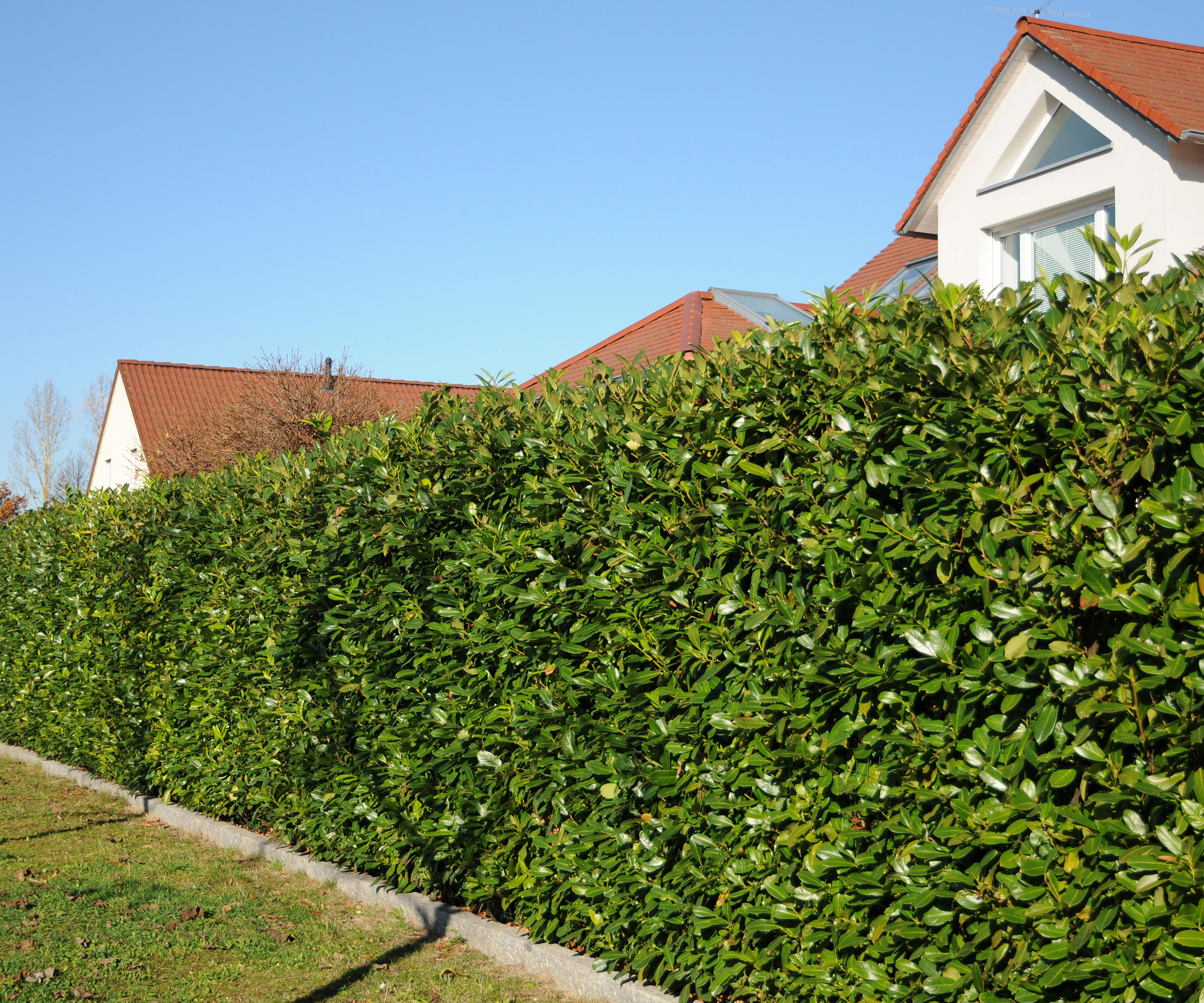What is the legal height of a hedge between neighbours? Plus, how to avoid any potential disputes
While it can be easy to assume you have legal backing when hedges are too high, it's not a simple case of getting out the tape measure to prove your point. Instead there are guidelines and a strict process to follow

If you're researching landscaping ideas, or eyeing up a property for renovation with an overgrown hedge, you may be looking to understand what is the legal height of a hedge between neighbours in order to avoid any potential issues.
The good – and bad news – is that there's isn't actually a legal height. However that doesn't mean to say you can't get into trouble for an unruly border, or you don't have any rights if your neighbour is refusing to trim their topiary.
Here's what Simon Rix, Homebuilding & Renovating's planning expert says you need to be aware of in order to prevent, and resolve, any height gripes.
What are the rules for hedge height?
Although there is no official legal height of a hedge between neighbours, you do have grounds and regulations you can call upon if you feel a hedge is too high. And likewise, if your neighbour comes knocking on your door threatening action, it helps to know just how much grounds they have for their complaint. The answer is some, but it's not a legal issue – just yet.
"Under the Anti-social Behaviour Act 2003, you can ask a neighbour to reduce the height of a hedge (specifically evergreen or semi-evergreen hedges) if it is adversely affecting the reasonable enjoyment of your home or garden," says Simon Rix.
"For example, if the hedge is blocking light or outlook. However, this doesn't apply to isolated trees or non-evergreen hedges," he adds.
But, as well as understanding what species form the hedge, before you can call upon the support of your local authority, there are certain specifications and steps to follow.


Simon Rix is a professional planning consultant, who began his career working in local government in the 1990s. He was a council officer and later an elected councillor, so he knows how the planning system works from both sides. He went on to set up Planix.UK Planning Consultants Ltd; a consultancy company that advises self builders, home extenders and those taking on small to medium-sized building projects, about planning permission.
What to do if you feel a hedge is too high
In the first instance, if you do feel a hedge is too high, the onus is on the person objecting about the hedge to try and resolve the issue with the hedge's owner.
The hedge that's being disputed, also needs to be 2m or more in height and made up of evergreen, or mostly evergreen species. Only after attempting to get the owner of the hedge to reduce the height can you call in the powers of your local council.
"If you've made reasonable efforts to resolve the issue informally (e.g. a letter or conversation), and no agreement is reached, you can lodge a formal complaint with the local council under the high hedges legislation in Part 8 of the 2003 Act," advises Simon Rix. "The council can then investigate and, if appropriate, issue a remedial notice requiring the hedge to be reduced and maintained at a lower height."
So, if you do find yourself facing such an issue, make sure you keep a record of any correspondence, telephone calls or means of attempting to resolve the issue. You will need this in order to proceed with a formal complaint. Most local councils will have an official complaints form you can request if you do find yourself in a position to lodge one.

Do the same guidelines apply to hedges that border roads or pathways?
It's also important to note that the guidance regarding hedge heights applies across your whole property – even when the hedges border a path or road rather than a neighbour.
"The same basic principle applies across a property," confirms Simon Rix. "So while there's no specific legal height limit for hedges, if the hedge obstructs a highway, pavement, or visibility splay (e.g. near a road junction), the local highway authority can take action under the Highways Act 1980 to require trimming or removal to maintain safety."
Wondering if you can just avoid cutting the hedge and hope the council deals with it for you? This is only an option if you're prepared to fork out money to someone other than your own tree surgeon or gardener, as as the council can charge you for any work they need to do to make the area safe.
Cutting down hedges that aren't yours
Although you might be tempted to take matters into your own hands, as well as there being rules in place about the times of year when you can cut hedges, there are also guidelines about what parts of a hedge you can cut if it's not yours.
You're only allowed (unless otherwise agreed with your neighbour) to cut down any part of the hedge that's encroaching on your side of the boundary. You can't cut the top of it down to a lower height, and neither can you throw back anything you do cut down onto your neighbour's property – even if you are unhappy with its size.
That said, if the hedge is causing damage to your property in any way, it is the responsibility of your neighbour to rectify this – not you.
It's a matter I had to deal with personally last year on behalf of my mum whose conifers and holly bush had grown out of control. While the neighbour was perhaps a little overly assertive in the way he approached the matter, having checked the guidelines, I realised he was correct in his request and so arranged for the trees to be cut down.
However, understanding the regulations about the matter certainly helped prevent further issues, as even though he was demanding immediate action, I was able to explain, with proof, that he would have to wait until the end of the bird nesting season.

FAQs
Do hedges need planning permission?
I"n general, hedges themselves do not require planning permission," says Simon Rix. However, planning constraints can apply he says, as follows:
- If you're in a Conservation Area, notice may be needed to carry out significant hedge work
- If the hedge is part of a planning condition or forms part of an approved landscape plan, changes may need approval
- Tree Preservation Orders (TPOs) can also apply to hedgerow trees, even if they’re part of a hedge
- Under the Hedgerow Regulations 1997, removal of countryside hedgerows (not domestic ones) can require consent, particularly if they’re over 30 years old or considered ecologically or historically important
Simon Rix's final piece of advice when it comes to keeping your hedges in check? Make sure you know who owns the hedge before you start knocking on your neighbour's door, or be prepared with the right information when someone knocks on yours.
"For both hedges and walls, boundary disputes can also arise when the hedge is on the edge of your property. It's always therefore a good to refer to the Land Registry or a deed plan to confirm ownership and maintenance responsibilities."
Facing an issue with a fence and a hedge? Find out how to establish which side of the fence is mine, before you start demanding repairs or removal.
Get the Homebuilding & Renovating Newsletter
Bring your dream home to life with expert advice, how to guides and design inspiration. Sign up for our newsletter and get two free tickets to a Homebuilding & Renovating Show near you.

Sarah is Homebuilding & Renovating’s Assistant Editor and joined the team in 2024. An established homes and interiors writer, Sarah has renovated and extended a number of properties, including a listing building and renovation project that featured on Grand Designs. Although she said she would never buy a listed property again, she has recently purchased a Grade II listed apartment. As it had already been professionally renovated, she has instead set her sights on tackling some changes to improve the building’s energy efficiency, as well as adding some personal touches to the interior.
